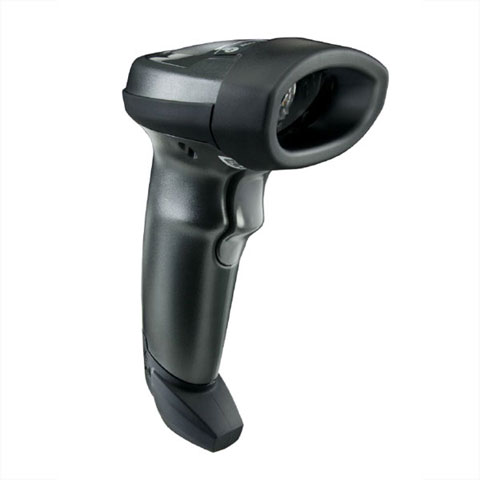Q: How is a laser barcode scanner different form an imager barcode scanner?
A: All barcode scanners perform the same function in a similar way; they have an illuminating light source that’s emitted from the barcode scanner in order to read a barcode. That said, there are primarily 2 different barcode scanner technologies that scan engines employ: 1, laser and, 2, imager (imaging).

Laser Scanner Engine: You can always spot a laser barcode scanner by the thin beam of light it emits, which is essentially a non-harmful laser beam. The laser scanner reads the data in a barcode by decoding the reflected light from the barcode. A laser scan engine has mirrors that manage the bi-directional light sources. In addition, a laser scan engine is comprised of moving parts, so when you hold a laser barcode scanner you can sometimes feel a slight vibration. Laser barcode scanners are an ideal choice for all scanning applications and a must have for scanning barcodes in a bright light environment such as outside in sunny conditions. A laser barcode scanner is also ideally suited for reading small (high density) barcodes and barcodes on a curved surface due to its thin, focused laser beam with a snappy barcode decoding ability providing a high first time read rate of barcodes
Imager Scanner Engine (aka CCD or LED scanner): An imager/CCD barcode scanner reads a barcode just as its name implies...it takes a digital ‘image’ of the barcode similar to a digital camera in order to decode a barcode. (You can identify an imager barcode scanner due to its wide light beam as opposed to the well-defined/thin beam of a laser barcode scanner.) An imager scanner’s engine is comprised of thousands of LED light sensors that measure the reflecting light from a barcode and decodes that into a virtual electronic image within milliseconds of a scan so the barcode data can be read. Other differences of an imager barcode scanner are: unlike a laser barcode scanner, an imager scanner has no moving parts. Many imager barcode scanner manufacturers use this as a selling point by saying ‘no moving parts’ equates to a longer scan engine lifespan; however, over our many years in the POS industry, we haven’t seen enough evidence to support this claim. That said, many imager barcode scanners can perform just as good as a comparable laser barcode scanner for often times less money.
Customers often ask us, “Which barcode scanner technology is better? Laser or imager?” The answer is a simple one: both are good, and both have their own unique pros and cons for price and performance. We always recommend one to choose a barcode scanner based on budget and scanning application needs. For example, if a retailer wants to scan 2D barcodes such as QR codes, then an area imager barcode scanner is definitely recommended.
If you need additional help picking the best barcode scanner for your needs, please don’t hesitate to contact one of our point of sale experts.

